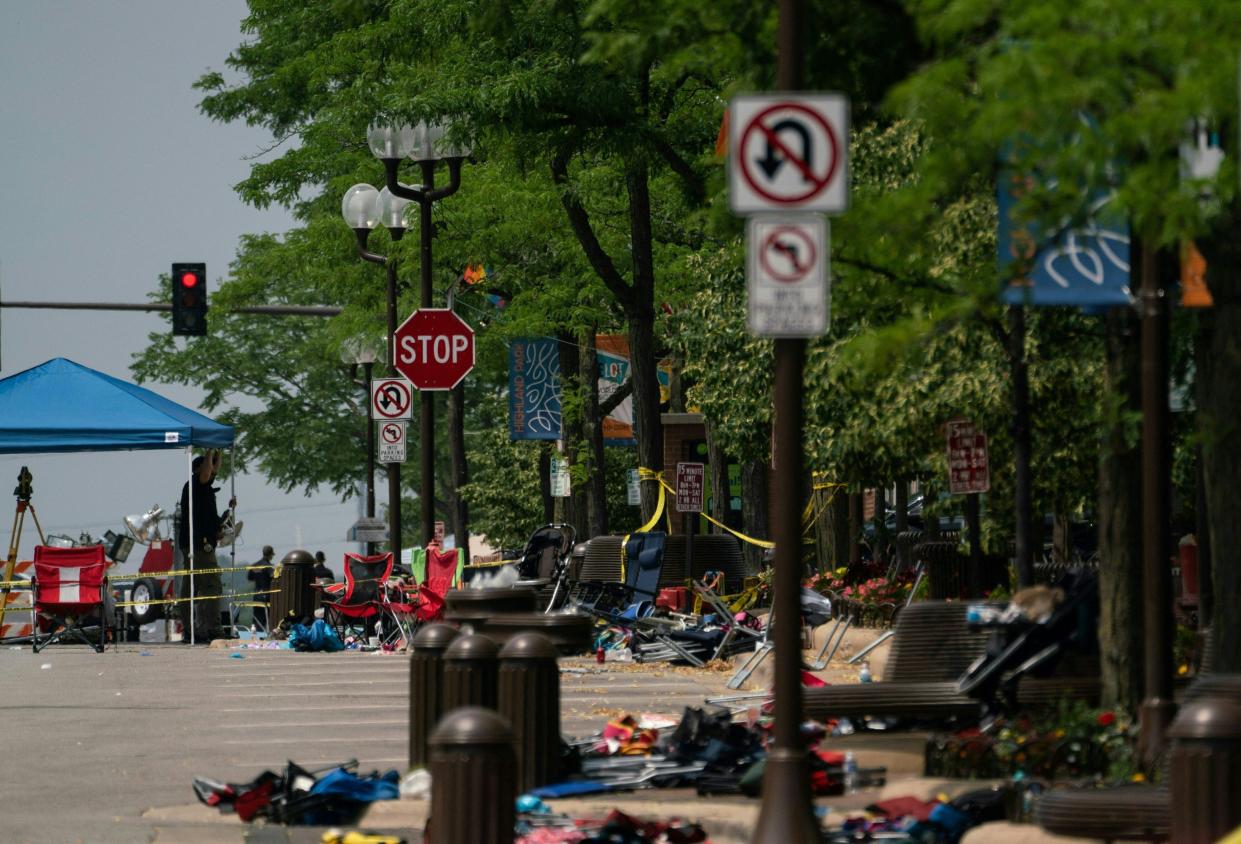Many mass shootings could be prevented, with early intervention when someone is troubled: expert
The Highland Park shooting suspect’s family saw nothing amiss, yet the social media trail was predictably and typically dark.
As details on the Fourth of July parade shooting emerged, it became increasingly evident that there had been numerous signs of trouble that is common in mass-shooter cases, as police recounted in a briefing on Tuesday.
It highlighted an often-deadly gap between what an accused shooter’s friends and loved ones perceived, and what actually happened — details understood only in hindsight.
At least 56% of mass shooters exhibited at least one dangerous warning sign beforehand, according to Everytown for Gun Safety, a nonprofit organization that aims to eliminate gun violence.
“I would say part of the problem is that nobody can conceive of the idea that it would be their loved one who could do something so terrible,” James Densley, professor of criminal justice at Metro State University in St. Paul, Minn., told the Daily News on Tuesday.

Chairs and belongings are seen left behind a day later at the scene of a mass shooting at a July 4th Parade in downtown Highland Park, Ill. (MAX HERMAN/)
“We have constructed a myth of who the mass shooter is,” said Densley, who also co-authored The Violence Project: How to Stop a Mass Shooting Epidemic with Hamline University professor Jillian Peterson. “The idea that this is an outsider, a monster, a madman, pure evil — when the truth is that the mass shooters are not ‘them,’ they are us. What we mean by that is that everybody, before they perpetrate a mass shooting, is somebody’s son, somebody’s nephew, somebody’s brother, somebody’s classmate, colleague, neighbor.”
When faced with this person, he said, it’s impossible to think that the person could be the perpetrator of such heinous deeds.
“We couldn’t possibly be sitting next to a future mass shooter in class, or at the lunch line at work, or at Thanksgiving dinner handing them the mashed potatoes,” Densley said, because we are conditioned to imagine such criminals as “scary bad guys who lock themselves in basements, like who we see in the movies” instead of someone who could be right in our midst.
It’s not about hypervigilance and suspicion, Densley emphasized. It’s about reaching out if someone appears to be struggling, about “being attuned to what’s going on in people’s lives, get them talking.”
The 22-year-old Highland Park shooter appears to have planned his diabolical assault for weeks, and his social media posts provided boulder-sized clues. Tributes to mass shootings, music videos under his rapper handle, and other platforms and profiles were rife with tributes to mass shootings and public killings.
The Highland Park shooter did indeed have two previous police encounters, in 2019, one of them an attempted suicide and the other a threat to “kill everyone,” police said Tuesday. That’s also the year he bought several guns legally, including the one he used on Monday in Highland Park.
He allegedly fired more than 70 rounds into the Fourth of July parade in the Chicago suburb. He donned women’s clothing to evade detection and hide his facial tattoos and plotted out how to access a building rooftop, Lake County Major Crimes Task Force spokesman Chris Covelli said at a briefing Tuesday afternoon.
In that regard this shooter was no different than the 18-year-old who gunned down 10 people in a racist rage at a Buffalo supermarket, or the same-aged miscreant who shot 19 schoolchildren and two teachers to death in Uvalde, Texas.
Both those two alleged gunmen showed signs that included perpetrating cruelty to animals — allegedly killing cats and airing the results online, according to ABC News. The accused shooter in Uvalde — who was shot dead once authorities breached the classroom – allegedly threatened girls online before opening fire at Robb Elementary School. He also posted photos of himself with a bag of dead cats.
People who commit animal abuse are five times more likely to inflict deadly violence on fellow humans, according to a study cited by animal rights group PETA.
Those who knew the Uvalde shooter saw him change in the days and weeks leading up to his attack, The Associated Press reported. He did not reveal his concrete plans, however, until 30 minutes before he left arrived at the school, according to Texas Gov. Greg Abbott.
Likewise the accused Buffalo shooter — who was taken alive — had previously threatened to commit mass murder at his school, was obsessed with firearms and had unleashed racist rhetoric on his social media platforms.
Mass shooters almost unilaterally reach a crisis point, Densley said. Many of them are suicidal.
“Usually, that crisis point is the moment they buy the gun,” he told The News. “A mass shooting is really intended to be a spectacle. It’s intended to be a final act.”
Once they’ve reached that breaking point, they look around for people who feel the same way they do. And invariably find them among other mass shooters.
“Why do I feel the way that I feel? And has anybody else felt like me?” Densley said, describing the existential question they invariably face. “The people who’ve felt like them are other mass shooters. They’ve come to the same conclusions. You end up mimicking what has gone before you.”
They radicalize themselves, which goes deeper than mere copycatting, and buy their gun, he said. And then they plan.
“It’s around that same time that you go out and purchase a gun,” Densley said. “That right there is your red flag.”
